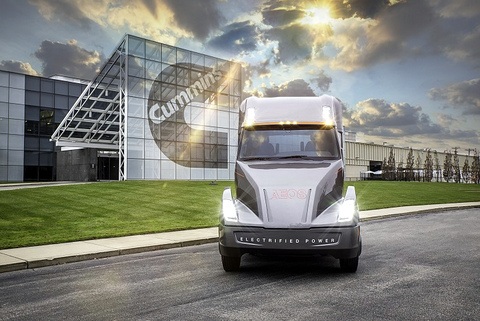Diesel Engine Company Shows Off Silicon Valley EV Center
The story of the foundation of Cummins Inc., one of the biggest engine manufacturers in the world, is one of failure. One hundred years ago, Clessie Cummins thought Rudolf Diesel’s 30-year-old eponymous engine held great commercial promise, even though it had yet to prove itself in the market. After getting financial backing, he launched the company that still bears his name. Initially, he ran into several years of customer rejections after creating defective engines. Nevertheless, Cummins continued to work on his designs and eventually found success.

Fast forward a century and Cummins held an open house to showcase its newest business unit—the Electrified Power Segment. Built on the foundation of last year’s acquisition of Efficient Drivetrains, Inc. (EDI), a California start-up designing and building electrified powertrains, this is part of Cummins next 100-year strategy.
A University Beginning
More than two decades ago EDI was spun out of the University of California, Davis, licensing patents from Professor Andy Frank with the goal of commercializing electrified vehicle technology. Five years ago the company moved into the Milpitas facility where this week’s open house was held with help from a $3 million California Energy Commission grant for equipment and tooling. As EDI CEO (and now Cummins executive) Jeorg Ferchau said at the event, the building they now fill was an empty semiconductor company facility when they moved in.
Julie Furber, Cummins vice president, Electrified Power Business, keynoted the Silicon Valley event by highlighting her company’s road to the future as it hedges its path away from its core diesel engine technology. The path began after some in-house projects and accelerated with acquisitions:

- 2017 – Brammo in Oregon for battery expertise
- 2018 – Johnson Matthey’s UK automotive battery systems business
- 2018 – EDI for its IP and technology
- 2018 – Hydrogenics fuel cell for IP and technology
The goal for the next century is to “challenge the impossible, Furber said, quoting the company’s new tagline. Twenty years ago the company began electrification initiatives, but two years ago things kicked into gear, leading to the establishment of the electrification unit—something a global company does not do lightly.
“Diesel has been the answer,” Furber told Clean Fleet Report, although the company has branched into alternative fuels with its Cummins Westport CNG joint venture. While one-third of current trucks on the road in the U.S. carry Cummins engines, Furber said the “world is changing” and the company is “trying to grow fast.” It is carrying its existing relationships with major truck and bus OEMs over to its new powertrain initiatives. The result has been projects with Blue Bird, Daimler Trucks North America, Gillig, Thomas, PACCAR and the USPS. Furber noted that the key advantage of a Cummins-electric powertrain compared to one of the start-ups building electrified components (such as EDI was before its acquisition) is the level of support and service an established company like Cummins can provide.
The Unclear Future
Even with the investments and focus Cummins is making on electrification and the company’s commitment to be there for the long haul, Furber made clear there is “no certain market right now.” The Electrified Power Segment is happily selling hundreds of powertrains to bus customers while the engine folks are cranking out hundreds of thousands of engines that are selling at an established margin of profit. “I wish I had a crystal ball,” Furber said when asked about the timeline for her division to be profitable and mainstream. For now, government assistance in incentives or regulation is key to launching the market. As she put it, three elements are necessary to come together, something that appears to be happening in Europe and, to a degree, in China—government will, public opinion and industry initiatives. As it stands, electrified drivetrains are probably a 20-25-year plan to become a regular part of Cummins business, Furber suggested.

The bottom line at Cummins is they are determined to be the powertrain provider for the future whatever that powertrain might be. The corporate vision of “innovating for our customers to power their success” gives the company plenty of latitude to explore battery electric and fuel cell technologies for future products.
